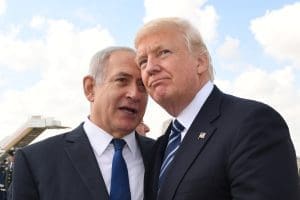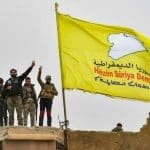President Tayyip Erdoğan’s desire to embrace Syrian leader Bashar al-Assad has suddenly rekindled and sparked curiosity. What has engendered such a passionate shift after not only denouncing Assad as a “murderer” and a “butcher” but also attempting to overthrow him by arming opposition forces inside Syria?
It is true that the move towards normalization between Syria and Türkiye did not happen out of the blue. The decision on this issue at different levels of the Turkish state was made a long time ago. Due to numerous miscalculations and unintended consequences, Türkiye had to alter its Syrian policy gradually since 2016.
The final phase of this adjustment involved multilateral talks mediated by Russia and later joined by Iran. The normalization process was almost ready to proceed before Türkiye’s 2023 presidential elections. The failure of the parties to agree on the main terms derailed the discussions. With a sense of entitlement to a military presence in the former Ottoman geography, Erdoğan thinks that he can normalize Türkiye’s occupation in Syria and re-embrace Assad on that basis. Assad, on the other hand, demands the withdrawal of Turkish troops and an end to support for armed groups.
Türkiye’s priorities shifted when the US gave up on the Free Syrian Army (FSA) during the rise of ISIS, and began to work with the Kurds in October 2014. Russia’s entry into the war in September 2015 also influenced Türkiye’s direction. The shooting down of a Russian plane in the border and the assassination of the Russian ambassador to Ankara obliged Erdoğan to appease Russia and mend relations, leading to the creation of the Astana process.
Erdoğan’s new priority became the elimination of the de facto autonomous administration led by the “Apoist” Kurds (supporters of PKK leader Abdullah Öcalan), which became branded a “terror corridor”, and the inclusion of opposition groups in the government in Damascus. The capacity of the FSA and the Syrian National Army, which was established subsequently, was channeled into the war against the autonomous administration.
Factors that subdued Erdoğan
While expectations lingered, a new evaluation suggested that shaking hands with Assad could enable Türkiye to achieve its goals. Several important factors led Erdoğan to this conclusion:
- The Geneva and Astana processes were fruitless.
- Pressure has increased regarding Syrians who live under temporary protection status in Türkiye. On June 30 this year, over a rumor of sexual harassment, a lynching attempt against Syrian in the central Anatolian city of Kayseri echoed in Syria. On July 1, in places such as Afrin, Idlib, Azaz, Jarablus, Al-Rai and Marea, trucks, military bases, institutions such as the governor’s office and Turkish postal service, and Turkish flags were targeted.
- Türkiye’s military actions against the Kurdish-held autonomous areas were limited to Afrin, Tel Abyad, and Ras al-Ayn. The plan to establish a 30km “safe zone” along the border came up against red lights by the US and Russia. As a result, the anticipated large-scale operation announced by Erdoğan for the summer of 2024 to secure the buffer zone in Iraq and Syria did not materialize due to the prevailing conditions.
- International interest in the Syrian issue has waned. Erdoğan’s dreams of “building cities for refugees” with international funds went un-reciprocated.
- In return for the concessions he gave to NATO, Erdoğan has not found the cooperation he was looking for among his Western allies on Syria.
- The prediction that if Israel declares war on Lebanon, the fire it will unleash will engulf Syria has forced Ankara to review the risks it is taking on the ground. If the conflicts become regionalized, Syria, which is de facto divided into three different control areas, could be permanently fragmented. It may not be possible to stop the fault lines activated in Syria at the Turkish-Syrian border.
- Conspiracy theories suggesting that the “chaos, Kurdish uprising and partition scenario” like in Syria could be applied to Türkiye are being sold as hot cakes not only in the opposition ranks, but also in government circles. Foreign Minister Hakan Fidan warned that a world war could break out, referring to circumstances in Lebanon and Ukraine, while Erdoğan called Lebanese Prime Minister Najib Mikati and said, “We stand by Lebanon”. Parallels are being drawn between the return to the normalization agenda with Syria and regional tensions between Lebanon-Israel.
- On the other hand, it is thought that if Donald Trump returns to the White House in the US, the Syria policy may change and it is necessary to be prepared for this in advance. After a phone call with Erdoğan in 2019, Trump said, “Syria is yours” and decided to withdraw. When Türkiye’s 2019 Operation Peace Spring to secure the above-mentioned buffer zone in Syria, drew the ire of the US Congress, Trump u-turned and decided to keep American forces in the region, this time under the guise of keeping Iran in check, seizing oil and gas in Deir ez-Zor, protecting Israel and continuing the war against ISIS.
All of this whispers in Erdoğan’s ear: “Secure the Syrian file before it gets caught in a big storm and the bill becomes even bigger.”
Moscow didn’t work out, let it be Baghdad!
During the quadrilateral format in Moscow, Ankara complained that Russian leader Vladimir Putin did not put pressure on Assad to soften his stance, while Iran supported Damascus in its stubbornness. Previously, however, Ankara was of the opinion that Assad was incapable of making decisions independently of Russia and Iran. Meanwhile, Erdoğan hoped that the leaders of Egypt, Saudi Arabia, and the United Arab Emirates (UAE) could influence Damascus, as he had restored relations with them. The support of these three countries for normalization is not insignificant, but as long as Syria’s conditions remain to be met, it is unreasonable to expect that Arab leaders may unlock the lock in Damascus.
Russia wanted neither party to come to the table with preconditions. Later, some options were discussed to soften Assad’s preconditions. The most important point is Türkiye’s official commitment to a phased withdrawal from Syria according to a set timetable. However, it seems that Erdoğan wants to be contented with only a verbal commitment rather than a written text that binds him.
Following Erdoğan’s visit to Baghdad after 13 years, Iraqi Prime Minister Mohammed Shia’ al-Sudani took over the role of mediator. Although there was a plan for a meeting of ministers in Baghdad this July, the date could not be set due to the immaturity of conditions.
Erdoğan wants Putin, with whom he met in Astana on July 3 after a long hiatus, to reassert his influence and expects Iran to play a facilitating role in the new administration after the extraordinary election. If Erdoğan can somehow meet with Assad, he is looking for a chance to remove preconditions and say “let’s start where we left off” without giving the appearance of defeat for Türkiye.
What does Erdoğan want from normalization with Syria?
Many of Türkiye’s outstanding problems are attributed to the lack of relations with Damascus.
There is an organized campaign of hostility against asylum seekers in Türkiye. Hate speech and racist attacks make Syrians feel that Türkiye is no longer safe. A significant part of the opposition, particularly the nationalist Zafer Party, is responsible for spreading the lynch mob culture.
The government, with its passive attitude, adds impunity to this environment. Erdoğan is aware that the refugee card gives leverage to the opposition against the government while the economy is deteriorating. In fact, Erdoğan’s discourse of “Syrians are muhacir (immigrants), we are ansar (helpers),” does not find favor even amongst his own audience. Republican People’s Party (CHP) leader Özgür Özel’s plan to travel to Damascus and meet Assad has put additional pressure on Erdoğan. Erdoğan is focused on removing Syria as a factor in domestic politics, and if normalization is achieved, he will be able to say to the Syrians, “You can go home now.” Of course, normalization will not automatically lead to such a flow.
When Erdoğan looks at Damascus, he aims to kill a few birds with one stone. He wants to initiate the reconstruction process in Syria in collaboration with Damascus, potentially creating a win-win situation. Reconstruction is also viewed as a source of profit for the failing Turkish economy. Nevertheless, Syrians supporting Assad primarily hold Erdoğan responsible for the destruction of their cities due to his support for the proxy war that ravaged their country.
Another crucial objective of Erdoğan’s normalization is the dismantling of the Kurdish led autonomous administration in Syria’s north and east. His goal is to secure both a military partnership with Damascus to destroy the autonomous administration, and a political agreement to prevent the current de-facto autonomous status from gaining official recognition.
Damascus and Ankara agree that the US should withdraw from the region. For the time being, however, the Syrian government does not want to end the autonomous administration by using military force and risk causing conflict with the Kurds. Syria believes that once the US leaves, it can reach an agreement with the “Apoist” Kurds, with whom it has had relations since the time when Öcalan lived in Damascus.
Until Türkiye ends its involvement with the Muslim Brotherhood and other Islamist forces including takfiri-jihadists, Assad is unlikely to adopt a policy on the Kurds that would satisfy Ankara. Creating a new “Adana Accord”, the 1998 agreement that allowed the entry of Turkish forces into Syrian territory, against the PKK may not be easy, considering the much more complex circumstances that exist today.
The third important goal of normalization is to bring the opposition, supported by Türkiye, into the Syrian government. This involves writing a new constitution in accordance with UN Security Council Resolution 2254, organizing free elections, and establishing a transitional administration. This is the official framework. But the Geneva and Astana processes do not offer any hope. A possible reconciliation between Ankara and Damascus to make such a miracle possible does not align with the current situation in Damascus.
Complications ahead of the new chapter
Assad may be open to considering the benefits of normalizing relations with Türkiye if certain conditions are met, such as the withdrawal of Turkish troops and ending support for opposition groups. However, it is uncertain how these conditions will be established. Assad is waiting for a formal commitment to the withdrawal of Turkish troops, documented and supervised by the guarantor countries. Until this occurs, he is playing for time for the proposal of normalization. In the meantime, the resistance of regime elements inside Syria, who strongly oppose the Assad-Erdoğan embrace, is being ignored. The deep-seated belief that Türkiye does not leave the places it enters, as history has shown in Cyprus, Iraq and Libya, along with the efforts to “Turkify” areas in the Aleppo countryside, and the domestication of the armed opposition to the extent of declaring the Syrian National Army (SMO) as the Kuvâ-yi Milliye (Ottoman era irregular militias) feed the distrust in Damascus
Ankara is marketing the option of opposition forces joining the government with the rationale that ‘it will make Syria stronger”. Foreign Minister Hakan Fidan says: “Türkiye believes that Syria, which has achieved a little more stability and has become integrated with its government and opposition, will be a more effective actor, especially in the fight against PKK terrorism.”
Damascus regards these assessments as “an attempt to relocate terrorist organizations to the heart of the system.” Syria has been enduring a collective intervention for 13 years, resisting the opening of doors to opposition forces, including various Islamist and takfiri-jihadist factions. And therefore, for Damascus to agree to an option that it previously refused, even in the face of collapse, just to please Erdoğan, is an un-reciprocated consolation. Since 2016, Türkiye has assured armed groups that they will not be abandoned. However, the only step Damascus expects for normalization is for Türkiye to pull the plug on the opposition. The opposition shares the same understanding as Damascus, which is why their reaction is so fierce. For the armed opponents of the Syrian government, the change in Türkiye’s position means they will no longer have shelter in the so-called ‘liberated areas’, they will no longer be protected from Syrian military operations, and they will no longer receive weapons and financial support.
What will happen to paramilitary groups?
The question of what will happen to the more than 40 armed groups that make up the SMO and non-SMO organizations opens the door to many scenarios.
It is claimed that the National Intelligence Organization (MİT), in its meetings with these groups, assured them that Türkiye would not leave them in the lurch. Assad now sees these organizations as Türkiye’s own problem. If these groups are not disbanded or somehow moved to Türkiye during the normalization process, this means that they will remain in Syria and continue fighting. Saying “You are done, you can go” without offering them an alternative would be considered a betrayal and they could become a problem for Türkiye. Both embracing Assad and ensuring the militias indicate that one of the two sides has been deceived.
MİT’s promise of patronage to the SMO components also brings to mind the possibility of using them as “proxy forces” in foreign operations as an alternative. The militias that have moved to Libya, Azerbaijan and most recently Niger suggest that this option may be on the table.
However, if Türkiye removes the circle of protection, it will not hesitate to lead the Syrian armies against these groups with the support of Russia and Iran. This would be the final sweep for the armed groups that moved north from places like Hama, Homs, Eastern Aleppo and Eastern Ghouta (Damascus) on green buses while de-escalation zones were being established through the Astana process. This time they have nowhere to retreat to but Türkiye. Such an operation could also lead to a new wave of refugees. This is the scenario that feeds the fears of Europe, which sees Türkiye as its “watchdog for jihadists”.
Although the SMO showed its loyalty to Türkiye after the protests at the start of this month, some groups have spoken out against normalizing relations with Assad. For instance, Ahrar al-Sham, previously seen as aligned with the Qatar-Türkiye axis, stated that the revolutionary forces are united in their aim to overthrow Assad and that refugees can only return safely after the regime is overthrown. Some openly accused Türkiye of betrayal. At this stage, since there are no concrete steps being taken or breakthrough in negotiations, it seems like the majority do not want to anger Türkiye. Additionally, it is not yet the right time to discuss groups like Hayat Tahrir al-Sham (HTS), which controls Idlib and is on Ankara’s list of terrorist organizations. HTS is pragmatic as it is fed from the Turkish border and benefits from the protection of Turkish military bases around the M4 highway that runs parallel to the border. The organization’s leader, Abu Mohammed al-Jolani, stated that “the events are harming the allies of the revolution and their interests, especially Türkiye” and added that “the fitna between two precious peoples must be extinguished.” In other words, the organizations that are the remnants of ISIS and follow the Al-Qaeda line are the most strategic ones! However, if Türkiye modifies its border policy and pulls out of the Syrian operations, it could face backlash.
The Damascus-Ankara reconciliation also means the end for Syrian refugees chances to remain safe in Türkiye. Compromises that fail to respect humanitarian and legal conditions may subject those who do not return to Syria to a political and psychological environment where they will be easily accused, attacked, and left vulnerable. Any policy of forcibly sending refugees away could trigger unpredictable violence. The lynching attempts against asylum seekers above the border and the violent protests against the Turkish presence below the border show not only the bankruptcy of the government’s Syria policy but also what the future holds. The demonstrations were also a reaction to the search for normalization. Just two days before the events, Erdoğan had said that he would return to the days of family talks with Assad. By ignoring the reactions, Erdoğan went even further and said that he might invite Assad to Türkiye.
Damage control and disaster prevention
There is a perception in Türkiye that normalization will solve everything like a magic wand. After 13 years of disastrous Syria policy, there is no chance of a zero-cost exit.
It is overblown to expect that Syria will be a bed of roses in parallel with normalization, that refugees will return with a smile on their faces, that the Kurdish led Syrian Democratic Forces and their associated autonomous institutions will disintegrate, that armed opposition groups will disband and join civilian or political life, that reconstruction will boost the fortunes of Turkish construction companies.
However, Türkiye’s withdrawal can be evaluated as “it is never too late to mend”. Even if some of Erdoğan’s expectations come true, it will open up room for political maneuver. Erdoğan will be able to correct his mistakes, abandon faulty policies, nullify the opposition’s trump cards and prevent the bill from falling entirely on his shoulders without saying “I made a mistake”.
On the other hand, a possible Lebanon-Israel war would increase Iran’s influence in Syria, because Tehran won’t abandon Hezbollah. This is a development that Syria does not want. Syria’s return to the Arab League is also essentially about distancing itself from Iran. The normalization of relations with Türkiye could help Assad feel a little more secure, free his hands and help restore the balance of power. A Syria that is able to defend itself can help Türkiye avoid some of the scenarios that Ankara fears. It is in Türkiye’s interest that Syria, which once it wanted destroyed, is now resurrected. If Syria is dragged into a major war, the Kurdish autonomous story may move towards independence with the support of the US. But Türkiye may not be able to keep itself away from the fire in a Syria dragged into a major war. Especially if Turkish troops are involved, the risks of conflict will increase. The proxy war in Syria is likely to flare up again. Such a scenario could blow up the Turkish-Syrian borders and send the situation inside Türkiye, with 3.1 million officially registered Syrians, spiraling out of control.
If Trump is elected, he may enter into a bigger showdown with Iran in the shadow of the Lebanese-Israeli and Palestinian-Israeli conflicts. This may require him not to evacuate American bases in the region, but to fortify them. But Erdoğan’s hope is to reach an agreement with Trump and ensure the withdrawal of American forces. Based on the fact that Türkiye will not be allowed to launch a military operation against the Kurdish regions, Erdoğan aims to shape a strong position in Damascus that will not let the Kurds breathe. This requires Ankara to fortify Damascus in parallel with normalization.






